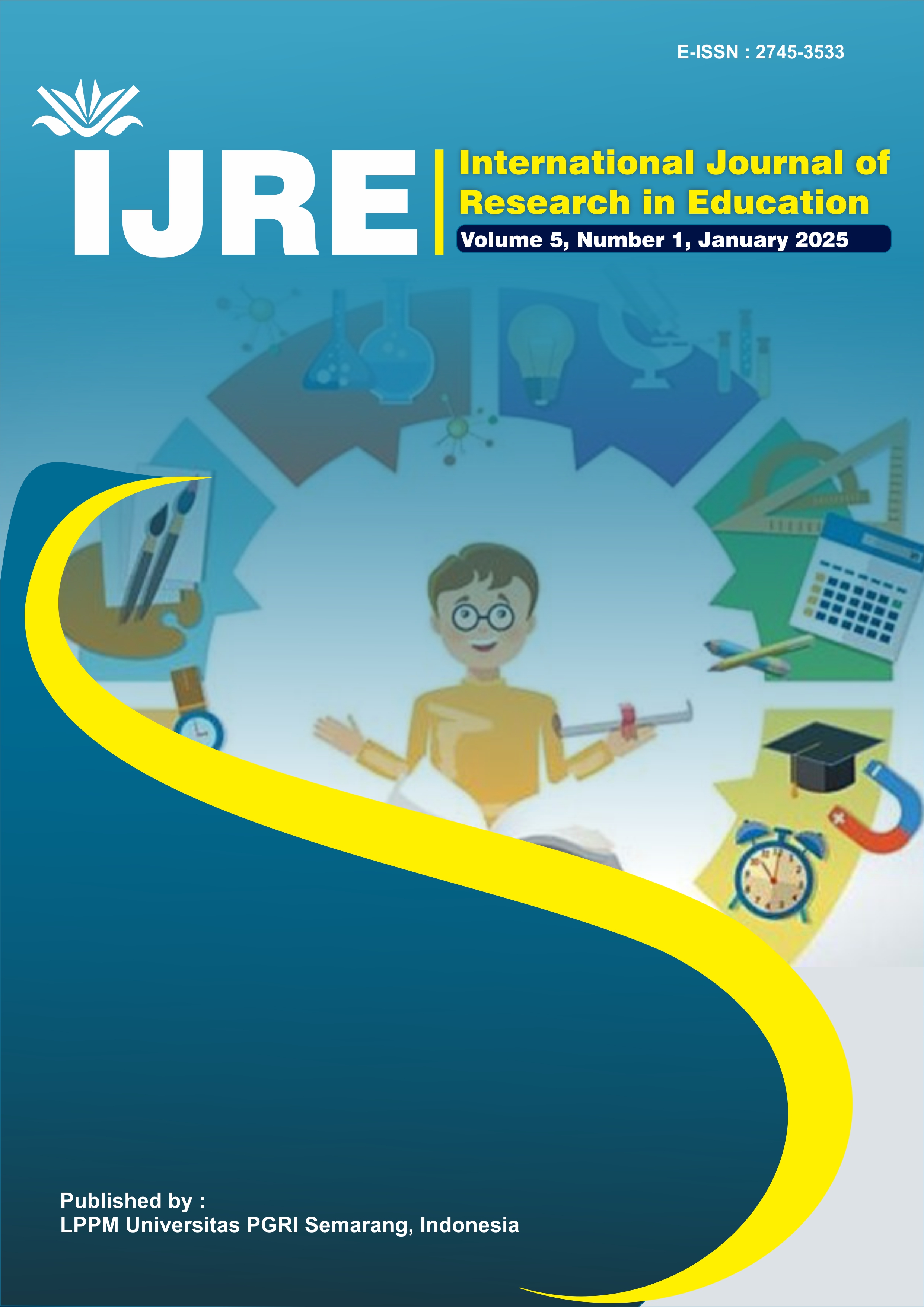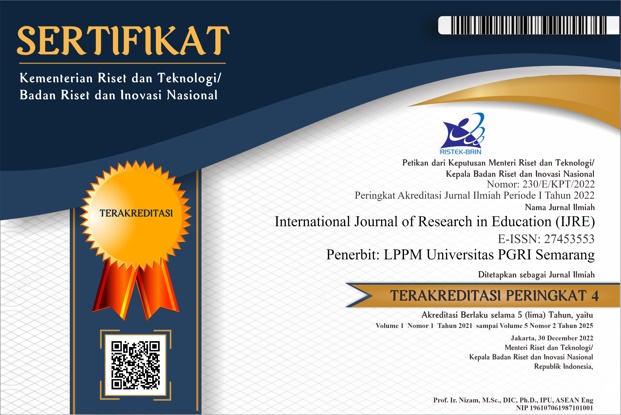English Lecturers' Perceptions towards the Quillbot App: An Alternative for Students in Paraphrasing and Rewriting English Writing
DOI:
https://doi.org/10.26877/ijre.v5i1.1219Keywords:
QuillBot, academic writing, paraphrasing tools, digital educationAbstract
This study examines the perceptions of English lecturers at the Faculty of Languages and Culture, University of 17 Agustus 1945 Semarang, regarding the use of QuillBot, an AI-powered paraphrasing tool, in academic writing. In an era where digital tools are transforming educational practices, QuillBot offers features such as grammar improvement, paraphrasing, and plagiarism prevention, which are particularly beneficial for non-native English speakers. Employing a quantitative research approach, data were collected through structured questionnaires and semi-structured interviews with seven English lecturers familiar with QuillBot. Findings reveal that 85% of lecturers perceive QuillBot as beneficial for enhancing students' paraphrasing and rewriting skills, while 70% believe it improves grammar and sentence structure. However, 30% expressed concerns about over-reliance on the tool, which may hinder the development of students’ independent writing abilities. The study underscores the importance of integrating QuillBot into teaching strategies responsibly. While its utility in fostering academic integrity and writing proficiency is evident, lecturers emphasize the need to balance its use with traditional learning methods to ensure holistic language development. The research highlights the potential of QuillBot to supplement instruction, but cautions against its overuse, which might compromise critical thinking and originality in student writing. Recommendations include incorporating QuillBot into process-oriented writing pedagogies, promoting digital literacy, and utilizing peer-review sessions to mitigate dependency. The study contributes to the discourse on AI-driven tools in education, advocating for a balanced approach that maximizes their benefits while maintaining academic integrity. Limitations include the small sample size and focus on a single institution, suggesting avenues for future research involving diverse contexts and quantitative assessments of QuillBot’s impact on writing quality and plagiarism rates.
References
Aljuaid, H. (2024). The Impact of Artificial Intelligence Tools on Academic Writing Instruction in Higher Education: A Systematic Review. Arab World English Journal, 1(1), 26–55. https://doi.org/10.24093/awej/chatgpt.2
Borenstein, J., & Howard, A. (2021). Emerging challenges in AI and the need for AI ethics education. AI and Ethics, 1(1), 61–65. https://doi.org/10.1007/s43681-020-00002-7
Davis, M., & Carroll, J. (2009). Formative feedback within plagiarism education: Is there a role for text-matching software? In © International Journal for Educational Integrity (Vol. 5, Issue 2). http://www.ojs.unisa.edu.au/journals/index.php/IJEI/
Ihekweazu, C., Zhou, B., & Adelowo, E. A. (n.d.). The Use of Artificial Intelligence in Academic Dishonesty: Ethical Considerations. https://iscap.us/proceedings/
Kim, N. J., & Kim, M. K. (2022). Teacher’s Perceptions of Using an Artificial Intelligence-Based Educational Tool for Scientific Writing. Frontiers in Education, 7. https://doi.org/10.3389/feduc.2022.755914
Myint, S. S. (n.d.). DEVELOPING THE WRITING SKILLS; BALANCING SOME APPROACHES AND TEACHING STRATEGIES. In Engineering Technology and Scientific Journal-ETSJ (Vol. 2020).
Thohir, L., Udin, U., Isnaeni, M., & Putera, L. J. (2024). The Effectiveness of Integrating Quillbot for Paraphrasing in Writing Instruction. Journal of Languages and Language Teaching, 12(4), 2112. https://doi.org/10.33394/jollt.v12i4.12780
Voicu, I. N. (n.d.). Publication Preprint.



